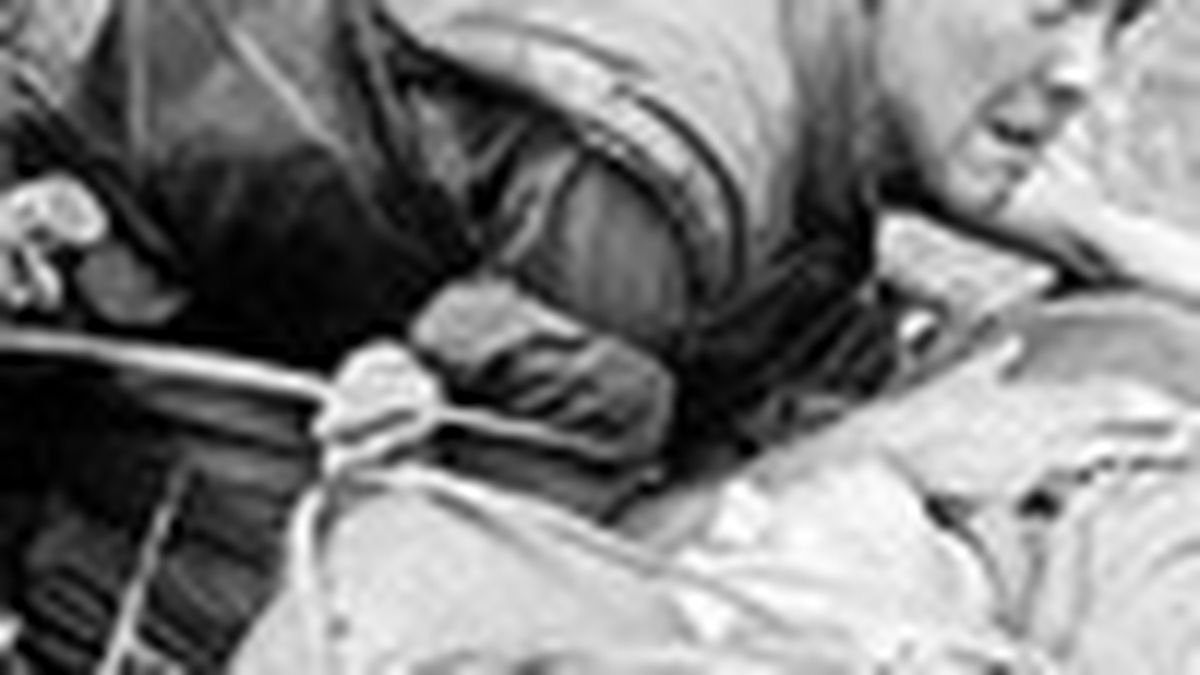May 1967, near Khe Sanh. In a heartbreaking trio of photographs, an American corpsman tends a wounded comrade on defoliated Hill 881 during the Vietnam War. In the first image, he cradles the soldier in an almost maternal gesture. In the second, he bends to listen for a heartbeat. In the third, he looks up in anguished appeal as he presses a dressing to the dying soldier’s heart.
These searing images should instantly prompt the name of their creator, but she is better known in Europe than here. At 21, French-born photographer Catherine Leroy went to Vietnam as a stringer for the Associated Press — one of very few women to do so. The only accredited journalist to take part in a combat jump with the 173rd Airborne, she was wounded while accompanying Marines in combat. During the 1968 Tet Offensive, she talked her way out of capture by the North Vietnamese army in Hue and brought back unprecedented portraits from behind enemy lines in a cover story for Life magazine.
Images like these should be on everyone’s minds today, when we are embroiled in yet another conflict with no end in sight. But the restrictions now placed on war photography by our government only confirm the power of such images to sway popular opinion — a lesson effectively learned in Vietnam. Photojournalism expert Fred Ritchin believes the photography of the Vietnam War “was an experiment in image-making that no powerful government will ever again abide.” Indeed, even if they had the daring of a Catherine Leroy, Iraq War photographers are much more limited in where and what they can shoot, thanks to heavy military meddling in the form of embedding and other restrictions.
Two events are happening in conjunction with the exhibit Under Fire: Vietnam War Photographs by Catherine Leroy, currently showing free at UC Berkeley’s Graduate School of Journalism’s Center for Photography. The public is invited to a free artist’s reception celebrating the exhibit’s opening, from 5:30 to 7 p.m. Tuesday, April 19, at the center in North Gate Hall on campus (510-642-3383). Tickets are required to attend Journalists Under Fire: Vietnam & Iraq, a talk at 7:30 that same evening, a short walk away at Wheeler Auditorium. J-School Dean Orville Schell and Professor Ken Light moderate a conversation with Vietnam War photographers Leroy and Don McCullin, author Jonathan Schell, Iraq War photographer and Pulitzer Prize-winner David Leeson, and writer Mark Danner.
Don McCullin, whom Light, curator at UC Berkeley’s Graduate Department of Journalism Center for Photography, calls “probably the best war photographer since Robert Capa” and a powerful influence on Sebastião Salgado and Jim Nachtwey, will conduct a one-day master workshop Sunday, April 17, at Emeryville’s Fotovision. Grab one of the twenty available spaces for this great opportunity at the Web site listed below. Advance copies of the new book Under Fire: Great Photographers and Writers in Vietnam (to be released at the end of May), as well as a retrospective book of McCullin’s photographs, will be available for purchase and signing by Leroy and McCullin at the opening reception and talk.
April 30 marks the thirtieth anniversary of the fall of Saigon. Professor Light says he feels a responsibility to show how Catherine Leroy’s images convey, in his words, a “cohesive vision of the terror and spirit of the Vietnam War” — and to ask why we aren’t seeing enough comparable images from the latest war being fought in our name. See Fotovision.org for details and registration for the workshop. Visit Journalism.Berkeley.edu/events for more info on the reception and Wheeler talk.












